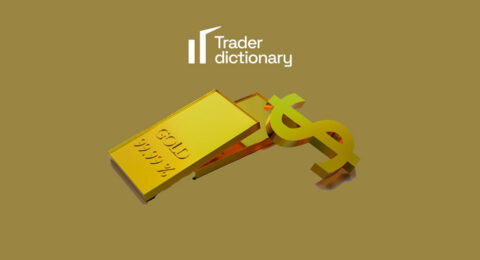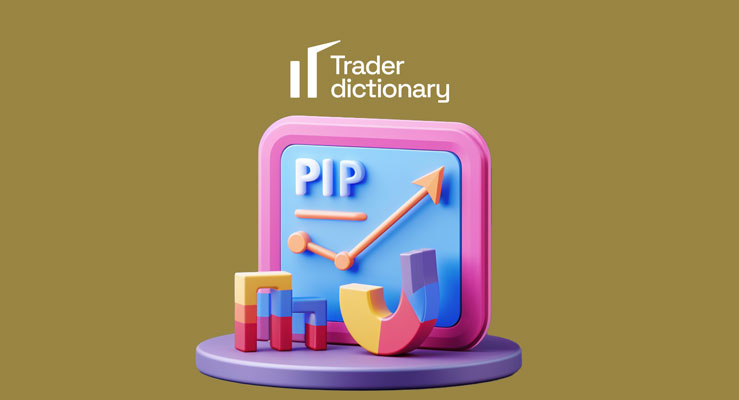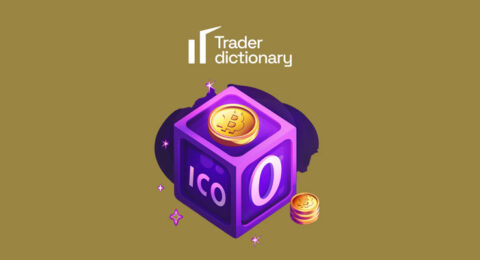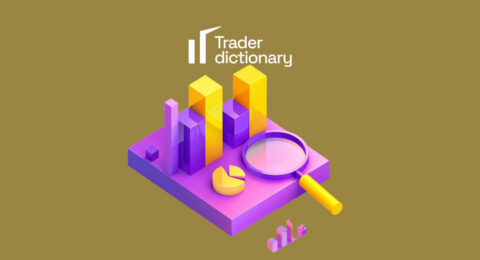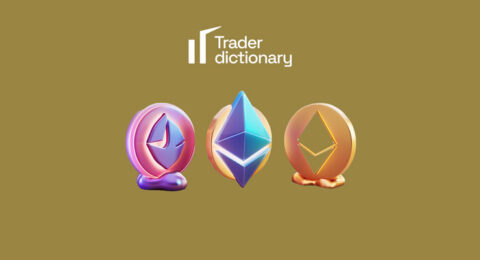In the world of financial investment, particularly in the realm of forex trading, there are numerous terms that can be confusing for newcomers. One of the most basic terms you need to clearly understand is “Pip”. This article will provide an overview of Pip – a crucial concept in Forex, helping you grasp how the market operates and how to calculate profits or losses in your trades. Let’s explore and clarify all queries around this concept, so that you can trade more intelligently!
What is a Pip in Forex?
A Pip in Forex, simply put, is how we measure the smallest price movement in a currency pair. It plays a significant role in forex trading.
Now, let’s talk about the importance of a pip. When you trade, each pip movement can represent a profit or a loss. For example, if you buy EUR/USD at 1.1050 and then sell at 1.1060, you’ve made a gain of 10 pips. The actual amount of money you make from these 10 pips can vary depending on the size of your order.
Understanding pips helps you identify and accurately assess opportunities and risks in each of your trades. That’s why we, forex traders, always emphasize mastering this knowledge.
Key Points
- Definition of Pip: A Pip is the unit of measurement for the smallest price movement in Forex. It helps us understand the extent of price changes of a currency pair.
- Value of a Pip: For most currency pairs, a pip equals 0.0001. However, for pairs with the Japanese Yen (JPY), a pip is 0.01.
- Calculating Pip Value: The actual value of a pip depends on the size of the trade and the currency pair traded.
- Pip and Profit: Changes in pips directly impact the profit or loss of a trade. This is important in calculating financial outcomes.
- Importance in Trading Decisions: Recognizing and understanding pips help traders make smarter and more accurate decisions.
- Pip and Spread: The difference between the buying and selling price (spread) is often calculated in pips, which is important in evaluating trading costs.
- Pip in Risk Management: Understanding pips is also important in managing risks, helping to set effective stop-loss and take-profit levels.
- Pip and Leverage: When using leverage, each pip movement can have a significant impact on your profit or loss.
- Popularity of Pip: Pip is a common term and widely used in the Forex trading community.
- Learning about Pip for Beginners: For newcomers, understanding and calculating pips is a fundamental skill necessary for success in trading.
How to Calculate the Value of a Pip
Calculating the value of a Pip in Forex trading is crucial, and here’s how professional traders usually do it.
First, you should know that the value of a pip depends on the currency pair and the size of the trade. For example, in trading with the EUR/USD pair, a pip usually values at 0.0001. However, if you trade with a pair involving the Japanese Yen, the value of a pip will be 0.01.
Now, consider this calculation. Suppose you trade a standard lot of 100,000 units of a currency pair. In the case of EUR/USD, each pip would be worth 10 USD. This is calculated as follows: 100,000 (amount) multiplied by 0.0001 (pip value) equals 10 USD. Similarly, if you trade a mini lot of 10,000 units, each pip would be worth 1 USD.
However, it’s important to note that the pip value can vary depending on the base currency and the counter currency in your trading pair. This means you need to pay attention to the current exchange rate to determine the exact value of a pip in your trade.
Example
When talking about Pips in Forex trading, specific examples are always the best way to understand better. Here are some typical examples:
- Trading EUR/USD: Suppose you buy EUR/USD at 1.1200 and sell at 1.1210. This means you’ve made a gain of 10 pips.
- Calculating Pip Value: If you trade 10,000 units (a mini lot), each pip is worth 1 USD. So, you’ve made 10 USD from this trade.
- Trading with Japanese Yen: For a pair like USD/JPY, a pip is 0.01, not 0.0001. This needs to be calculated differently.
- Profit and Loss: If you buy EUR/USD at 1.1200 and the price drops to 1.1190, you lose 10 pips. With a mini lot, this means you’ve lost 10 USD.
- Using Leverage: When using leverage, the volatility of a pip can be extremely important. A small change in pips can lead to a large profit or loss.
- Trading Large Amounts: With a standard lot of 100,000 units, each pip in EUR/USD is worth about 10 USD. This needs to be calculated carefully to avoid financial risk.
- Pip and Spread: When you start a trade, the spread (the difference between the buying and selling price) is often calculated in pips. This affects your trading costs.
- Pip in Short-term Trading: In scalping or day trading, every pip is very important as the goal is to make profits from small price changes.
- Flexibility of Pip: Understanding and accurately calculating pips allows for more flexibility in planning trades and managing risks.
Special Case with JPY
In the Forex trading world, currency pairs involving the Japanese Yen (JPY) have a unique way of calculating pips that you always need to remember when trading. For most other currency pairs, a pip is determined at the fourth decimal place, but with JPY, it’s at the second decimal place. This has significant implications for how we calculate and understand price movements.
- Pip Value: In pairs involving JPY, like USD/JPY, a pip is defined as 0.01, not 0.0001. This means that each smallest price movement has a larger value compared to other currency pairs.
- Calculating Profit and Loss: When trading these pairs, each pip movement will have a greater impact on your profit or loss. This needs to be carefully calculated, especially in large trades or when using high leverage.
- Reaction to News: Currency pairs involving JPY often react strongly to economic news, particularly from Japan and the USA. This volatility can create significant opportunities, but also comes with high risk.
- Risk Assessment: Due to the larger pip value, risk management and setting stop-loss orders need to be more carefully executed when trading with these pairs.
- Choosing Trade Size: Investors need to consider their trade size with JPY pairs, as the higher value per pip can lead to significant fluctuations in the trading account.
What is the Difference Between Pip and Pipette?
- Definition of Pip: As mentioned, a pip is the unit of measurement for the smallest price movement in the Forex market. For most currency pairs, a pip is defined as a 0.0001 movement, except for pairs involving the Japanese Yen, which is 0.01.
- Definition of Pipette: A pipette is a smaller part of a pip, typically the fifth decimal place in a currency pair’s quote. For example, if the EUR/USD price is 1.10512, the 2 at the end is a pipette.
- Calculating Profit and Loss: The difference between a pip and a pipette affects how we calculate profit and loss. Pipettes allow for more subtle measurement of price movements.
- Importance in Trading: While pips are the standard unit, pipettes are often used in more precise trading strategies, especially in short-term trading or scalping.
- Trading Decisions: Recognizing the difference between a pip and a pipette helps investors make more accurate trading decisions, especially when setting stop-loss and take-profit levels.
Therefore, understanding the difference between a pip and a pipette not only helps us calculate more accurately but also creates an advantage in making smart trading decisions.
Conclusion
Concluding the article “What is a Pip? Decoding Basic Forex Terminology”, we hope you have a better understanding of Pip – one of the most basic yet important concepts in Forex trading. With this knowledge, you will have additional tools necessary for analysis and making smart decisions in your trades. Remember, understanding terms like Pip is an important first step on the journey to becoming a wise trader. We wish you success and encourage you to continue following our blog for more useful knowledge about Forex and the financial market!


